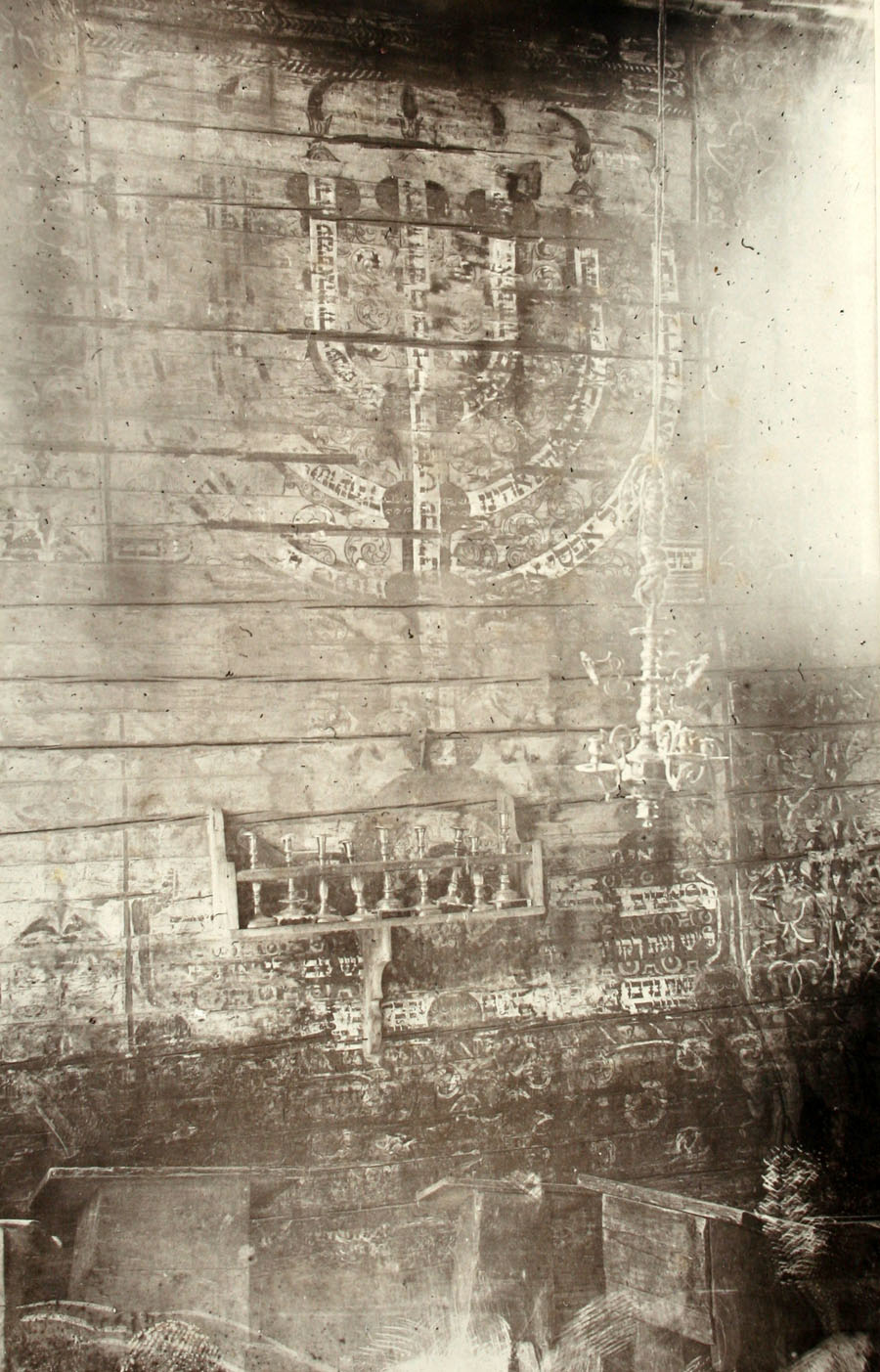A Brief History of Gwozdziec Synagogue /
Gwozdziec Synagogue view from the north west. Courtesy of the Tel Aviv Museum of Art.
The early history of the Gwozdziec Synagogue is unknown. Portions of the structure may have been built about 1650. Between 1700 and 1731, the major portion of the synagogue to survive into the 20th century was built. In 1731, the painting of the wooden cupola ceiling was completed. The centerpiece of this construction project was the reconfiguration of the prayer hall ceiling, which was once a low barrel vault similar to the ceiling in the Zabludów synagogue.
Gwozdziec Synagogue ceiling painting and central cupola. Coutesy of the Tel Aviv Museum of Art.
The newly renovated ceiling was a towering tent-like wooden cupola, inspired by the Tent of the Tabernacle, with a curving, undulating surface in a Baroque style. This wooden cupola was probably the first of its kind to be built in the region. The interior of the ceiling was completely covered by elaborate and brightly colored paintings showing Hebrew inscriptions and vibrant animal figures set against dense, vegetative backgrounds. When compared to the drab daily color palette experienced by most of the town's Jewish community, the experience of entering the intensely colored interior of one of the painted synagogues must have been exhilarating. If we could enter the Gwozdziec synagogue today, we would step into a prayer hall covered with a vibrant tapestry of wall paintings. Looking upward, the ceiling ascends in rich bordered tiers toward a steeply sloping pyramidal top.
Looking to either side, the ribbons of swirling vegetation and architectural fragments frame brilliant white panels inscribed with Hebrew texts. Animals both familiar and strange are prominently located throughout the prayer hall. Especially noticeable are a band of animal figures set in large medallions that ring the lower edge of the ceiling. The entire interior composition radiates a palate of deep, intense colors that saturate the prayer hall with intricate designs like those found in an oriental carpet
We chose the Gwozdziec wooden synagogue ceiling and roof not only for its beauty, but also because it is one of the best documented. By referencing the existing documentation of photographs and color studies of the Gwozdziec Synagogue from the early 20th century, the replica of the elaborately painted interior cupola ceiling brings the black and white photographs into living color. Zodiac symbols, arabesques, animal images, and floral designs divided by white strips inscribed with Hebrew text were painted on scaled wooden board panels using period techniques such as distemper (dry pigment particles bound together by a water soluble organic binder of rabbit skin glue) on traditional marble chalk gesso. This dramatic ceiling installation of the painted replica presents the complete ceiling as a towering spatial ensemble in the shape of a funneling and undulating tent-like structure. In its totality, this ceiling is a complete masterwork of Jewish liturgical and decorative art. It is here, beneath this extraordinary structure, that visitors will most directly feel the quality of the kind of space in which Polish Jews worshipped.
North Ceiling Study, Gwoździec Synagogue Synagogue, A color rendering of the original per 1914 study by Alois Breier, Courtesy of Tel Aviv Museum of Art
















